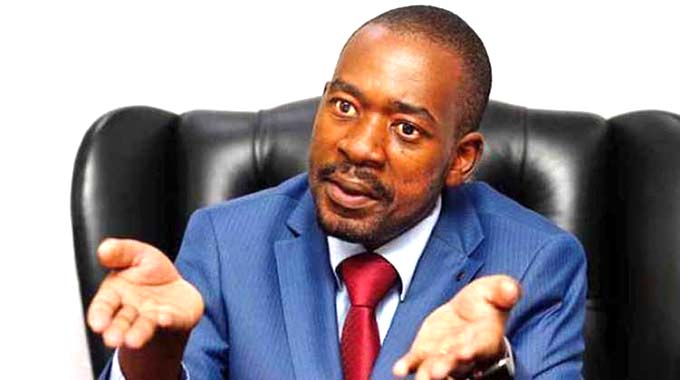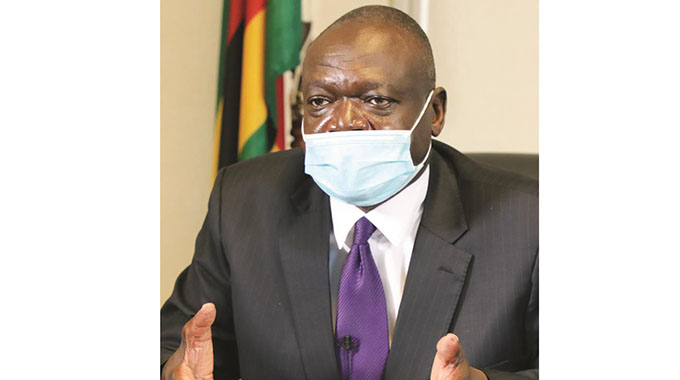Editorial Comment: Step up fight against water pollution

Reports that 32 urban local authorities in the country are discharging more than 366 million litres of raw sewage every day into rivers and dams are worrisome and this flagrant disregard of legal requirements could contribute to public health risks and the destruction of our water biodiversity and ecosystems.
Our water bodies are very fragile and sensitive ecological systems. The massive pollution is going on unchecked with the Environment Management Authority only issuing warnings and penalties to local authorities.
The quality of water in most of the country’s rivers and water bodies has deteriorated significantly over the last decades, largely due to poor investment in water infrastructure and sewage treatment.
Two main recurrent sources of pollution are getting worse: storm-water runoff contaminated with garbage, oil, chemicals and other pollutants and the discharge of combined storm water and untreated sewage. There is no clear sign of these being stopped.
Water pollution has come with a heavy price. For instance, Harare is spending between US$2 million and US$3 million monthly to procure water treatment chemicals because its supply dams are so filthy.
Municipalities, the Government, development actors and EMA should work together to eliminate all combined discharges of untreated or partially treated sewage to reduce public health risks and the destruction of marine biodiversity.
This will require incorporating green infrastructure strategies into building and zoning codes and strengthening clean-water standards. Residents and civil society have a big role to play.
While storm water drains and sewers are supposed to be separate, and there was a time when inspectors would force those allowing storm water to enter sewers to take swift action, we now have storm water flowing into drains with no one caring.
At the same time, the storm water drains are frequently clogged with earth or stone, allowing them to overflow, and are frequently choked with rubbish, chemicals and the like. The situation is dire during the rainy season.
These outflows present significant ecological and public health issues, as they generate algal blooms, reduce water quality and biodiversity, increase fish and other marine deaths and create the potential for waterborne-disease outbreaks.
Deaths were recorded in recent months in Bulawayo due to deadly water pollutants.
More sewage and pollutants are threatening our wetlands, rivers and other natural systems that protect against flooding.
Communities that discharge raw sewage into waterways must also be encouraged to play their part through separating sanitary waste and other pollutants that block sewer systems. Stones, bricks, metal rods and an assortment of other pollutants make control of overflows difficult.
Municipalities must step up efforts to engage local communities to scale up efforts to eliminate the discharge of raw sewage into our water bodies. Stopping the discharge of raw sewage into our own water bodies, is everyone’s responsibility.
The private sector, SMES and all other players must also be engaged to help our municipalities and the country to clean up their act.
Other cities elsewhere in the world are accelerating the establishment of neighbourhood green districts that implement pilot projects to curb the blocking and discharge of raw sewage into water bodies.
Some even go further to impose a storm-water utility fee to fund and advance new infrastructure initiatives to reduce the discharge of raw sewage into rivers.
Greater emphasis must also be placed on improving transparency and accountability in the operations of the municipalities which have seen a number of their officials arrested for corruption.
Municipalities need to invest more in improving water and sewer infrastructure to help reduce overflows in the long run.
Sewage discharge mitigation strategies could include treatment-plant upgrades and the construction of large retention tanks to hold overflows until the polluted water can be treated. These are now a major requirement.
These investments will help the municipalities to reduce the discharge of raw sewer significantly over time. Municipalities should set strong water-quality standards that encourage them to deploy green infrastructure strategies.
They will need to invest in these systems using innovative financing tools and plans.
Some environmental experts say incorporating green roofs, rain gardens, permeable pavement and water — retentive cisterns into new and renovated large-scale housing developments can reduce the load of water and sewage management systems.
Municipal planning and environmental protection agencies should require a higher standard of green infrastructure in all local building and housing locations to help reduce the discharge of raw sewage into our water bodies.
Councils are legally obliged to treat sewage before it is released into our water bodies, but for years they have ignored warnings about the growing scale of spills from sewage overflows.
The public is shocked at the frequency of sewage discharges and the damage it does to some of our country’s most precious and valuable river habitats.
The inability of EMA to prosecute or even drive improvement has led us to where we are today — in a complete shambles with water pollution rife and unchecked. The situation is very alarming and practical steps to end this problem need to be taken as a matter of urgency.
Our people deserve clean water free of the many dangerous pollutants found in sewage.
The only way to ensure this is to stop sewage overflows and leaks and ensure that no sewage is released into our streams, rivers, dams and lakes untreated.
We have to put our priorities right and invest more in our wastewater infrastructure to save lives.









Comments